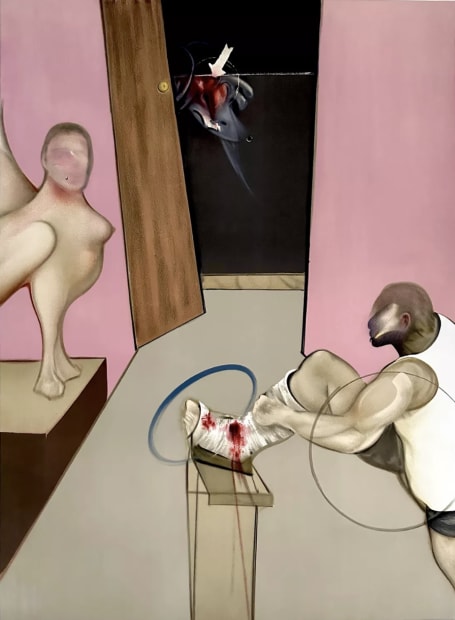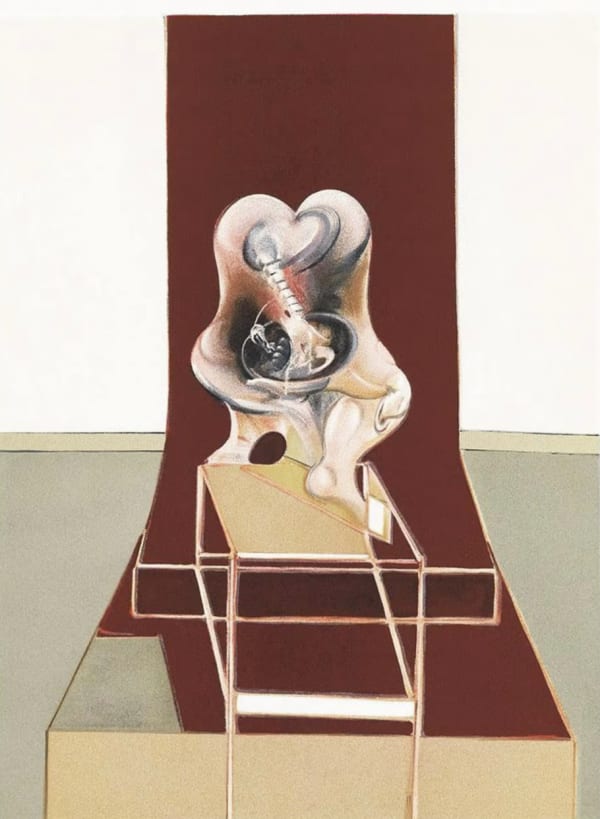-
 Oedipus and the Sphinx after Ingres, 1984Lithograph in colours on Arches paper, edition of 150, H 117 X W 84cm©The Estate of Francis Bacon
Oedipus and the Sphinx after Ingres, 1984Lithograph in colours on Arches paper, edition of 150, H 117 X W 84cm©The Estate of Francis Bacon -
I would like, in my arbitrary way, to bring one nearer to the actual human being.
- Francis BaconIn Greek mythology, Oedipus and the Sphinx meet in a moment of confrontation and fate. The Sphinx poses her deadly riddle; Oedipus solves it, and her destruction triggers his own downfall.
For Francis Bacon, this myth of knowledge and self-destruction echoed his own themes. In Oedipus and the Sphinx, the riddle serves as a symbol of the human condition, representing the search for meaning amid chaos. Stripped of narrative, Bacon focuses on the encounter itself: two figures locked in tension, intellect against instinct, control against compulsion.



